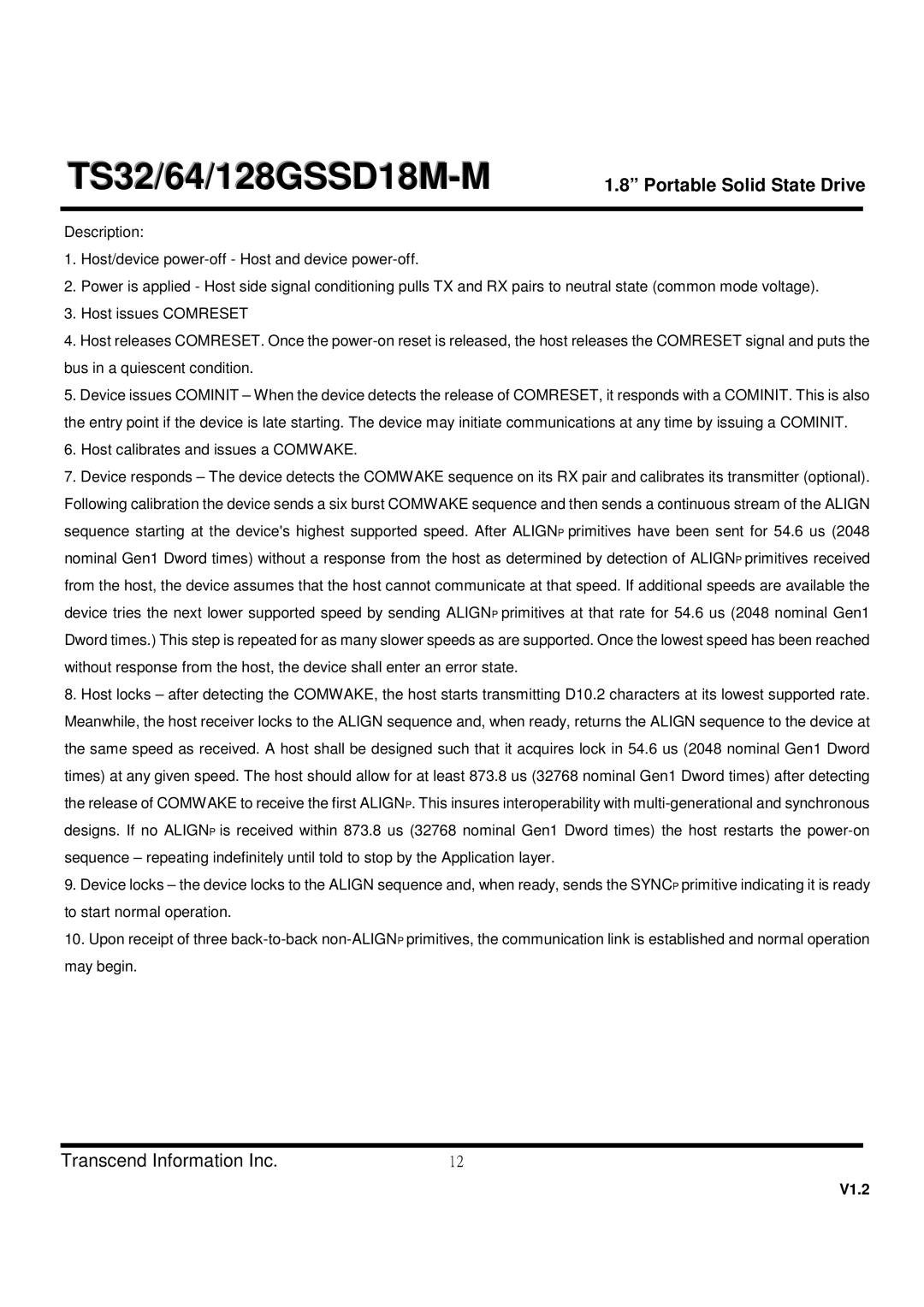TS128GSSD18M-M, TS64, TS32 specifications
Transcend Information, a leading manufacturer in digital storage and memory products, offers a range of solid-state drives (SSDs) that are designed to cater to both consumer and professional needs. Among their popular offerings are the TS32GSSD18M-M, TS64GSSD18M-M, and TS128GSSD18M-M models. These drives are compact, high-performance solutions that enable users to enhance their computing experience significantly.One of the main features of the Transcend TS SSD series is their form factor. They are designed in a 2.5-inch format, making them compatible with a wide variety of devices, including laptops, desktops, and even some gaming consoles. This versatility allows users to upgrade their existing systems and benefit from enhanced speed and efficiency.
In terms of performance, the TS series SSDs leverage the SATA III 6Gb/s interface, which maximizes the data transfer speed, ensuring quicker boot times, faster application launches, and improved file transfer rates compared to traditional hard drives. With sequential read speeds of up to 560MB/s and write speeds of up to 400MB/s, users can experience notable improvements in overall system responsiveness.
Another characteristic of the Transcend TS SSDs is their durability. Utilizing advanced 3D NAND flash technology, these drives provide higher density and increased reliability compared to conventional NAND. The absence of moving parts also contributes to their shock resistance, making them a reliable choice for mobile users and those who need dependable storage solutions for intensive tasks.
The TS SSDs also come equipped with features that enhance their longevity. They support wear leveling, which ensures even distribution of data writes across the drive, reducing the risk of premature wear. Additionally, the built-in static and dynamic wear leveling algorithms optimize the lifespan of the SSDs, making them a smart investment for both personal and professional use.
For users concerned with data integrity, the TS series offers advanced error correction technology that protects against data corruption, thereby ensuring the longevity and reliability of stored information. The drives also feature TRIM support, which keeps the SSD performance consistent over time, especially after prolonged use.
In conclusion, Transcend Information's TS32GSSD18M-M, TS64GSSD18M-M, and TS128GSSD18M-M models represent a robust suite of solid-state drives that offer speed, durability, and reliability. They are an excellent choice for users seeking to upgrade their storage solutions and experience the benefits of modern technology in their day-to-day activities. Whether for casual use, intensive applications, or professional settings, these SSDs deliver performance that meets the demands of the contemporary digital landscape.
